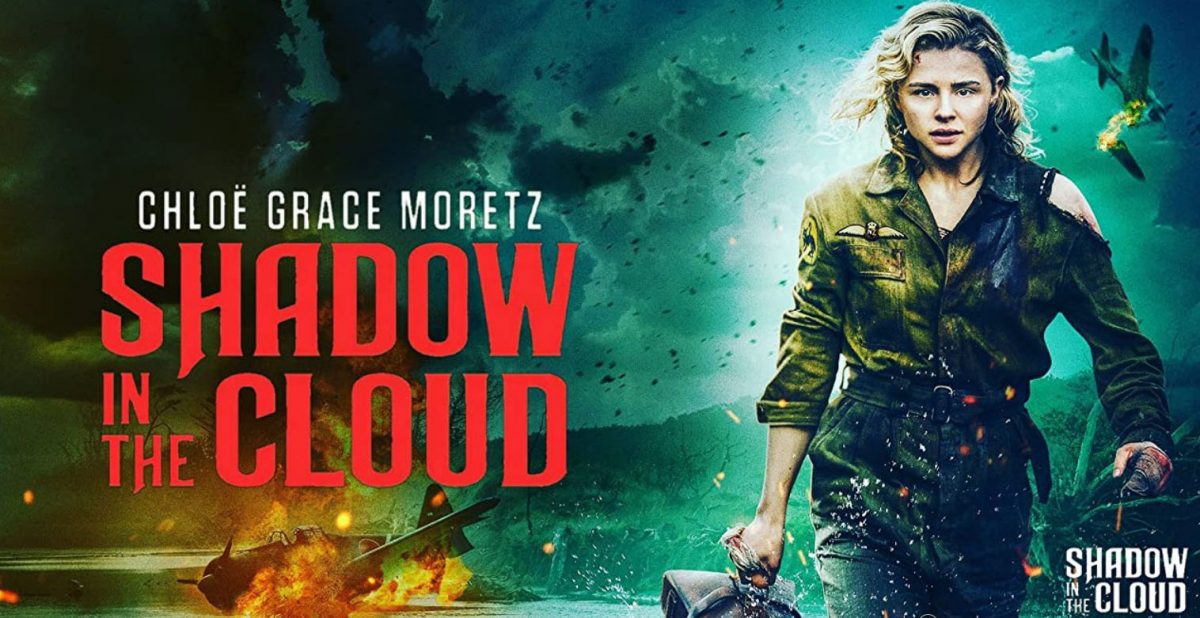There’s an unwavering earnestness that the new action horror film “Shadow in the Cloud” exudes in every minute of its run-time. That earnestness becomes critical to a film that will ultimately ask us to have faith in its strangeness.
There’s a scene about fifteen minutes into “Shadow in the Cloud” where the film seems to recalibrate itself and establish exactly what kind of movie it’s likely to be. Then, thirty minutes later, there’s another shift in the narrative that sends the plot into a different direction. Both moments seem to exist on the verge of something incredibly nebulous. One wrong step and it could completely upend the balance of the film. It says a lot about Roseanne Liang’s control of the film’s tone that both moments feel like they unfold organically rather than incredulously. The balancing act between potentially duelling tones is central.
After a brief animated sequence parodying a WWII cartoon and foreshadowing an important plot point, the film opens on the hands of Maude Garrett (Chloë Grace Moretz) preparing a package. Maude is a British flight officer trying to track down an aging Allied B-17, forebodingly dubbed ‘The Fool’s Errand’. She comes bearing papers that say she must accompany the crew on their flight from New Zealand to Samoa. The all-male crew is sceptical, but Maude insists this is essential, just as essential as the package she carries with her that’s part of a top-secret mission. She’s relegated to the ball turret for the ride, and with no space for her top-secret package one of the officers offers to hold on to it.
We follow Maude down into the turret, an enclosed space at the bottom of the fighter plane, and we stay with her there for some time. She can hear the crew, but she cannot see them. In these opening scenes, Liang quickly establishes the stakes – teasing the contents of the mysterious package, emphasising the sexism of the crew, and signalling the claustrophobic paranoia that threatens to overwhelm Maude, who manages to keep her wits at her disposal even against the hostility she’s been met with.
Maude’s entrapment in the turret, removed from the men above her, is explicitly metaphorical as she listens to them joke about her on the radio. But although she cannot see them, she can see things they cannot. Specifically, she can see the activities on the underside of the plane that signal some supernatural doom that will put everyone in jeopardy. From the first appearance of the otherworldly terror that is threatening to board the ship, the tension amps up. And it never relents after that.
There’s a knowing goofiness to the entire situation so that by the last twenty minutes, which devolve into full-blown chaos, the freneticism becomes enjoyable less because we are invested in what happens but because of the energetic momentum of Liang’s direction. It’s a strange marriage of emotions. Textually, this does not seem to be a fun time, but by the last fight sequence of the film, its devotion to a throwback kind of thrill feels welcome and enjoyable. The specific plot details are less important than the modulating of tone and mood at work here.
Chloë Grace Moretz is central to this. For long stretches of the film, we stick with her only and she works well with Liang, digging into sensibilities that she’s rarely shown before. It’s a sharp performance that “Shadow in the Cloud” depends on to sell its swerves. We trust Moretz’s Maggie, and so by buying into her point-of-view, we are willing to follow the film as it begins to deconstruct itself – and the very plane that it takes place on. This is a low-budget, B-movie kind of work, but nothing on screen – from the photography to its practical effects – suggests this. The film privileges a kind of playful level of artifice even as it intersects with real-world issues.
There’s a sequence where Maggie listens to the introduction of the male crew above, Director of Photography Kit Fraser frames them like the introductory reels of famous celebrities in the days of early cinema. They turn to look at us through the cameras as we hear their key details about them. It’s a kind of self-aware incorporation of tropey cinema that amuses but establishes the distinctiveness of the work.
It’s small-stakes stuff that might seem at odds with the end-credits sequence highlighting women that served in the army. But Liang knows exactly what she’s doing. “Shadow in the Cloud” is building on a long tradition of solitary women in male environments. “Alien” is maybe the most obvious predecessor, even if it’s not quite in that league. But the film is not just adapting a feminist ideology for clout. It’s invested, even if in pastiche ways, with the ways that Maude’s womanhood will come to define her survival and her goals. But it’s also a goofy monster movie with a steady stream of action sequences that charm for the ways they strain the limits of believability. Ultimately it works as it’s a relentlessly enjoyable romp.
Shadow in the Cloud is available on Prime Video and other streaming platforms.







